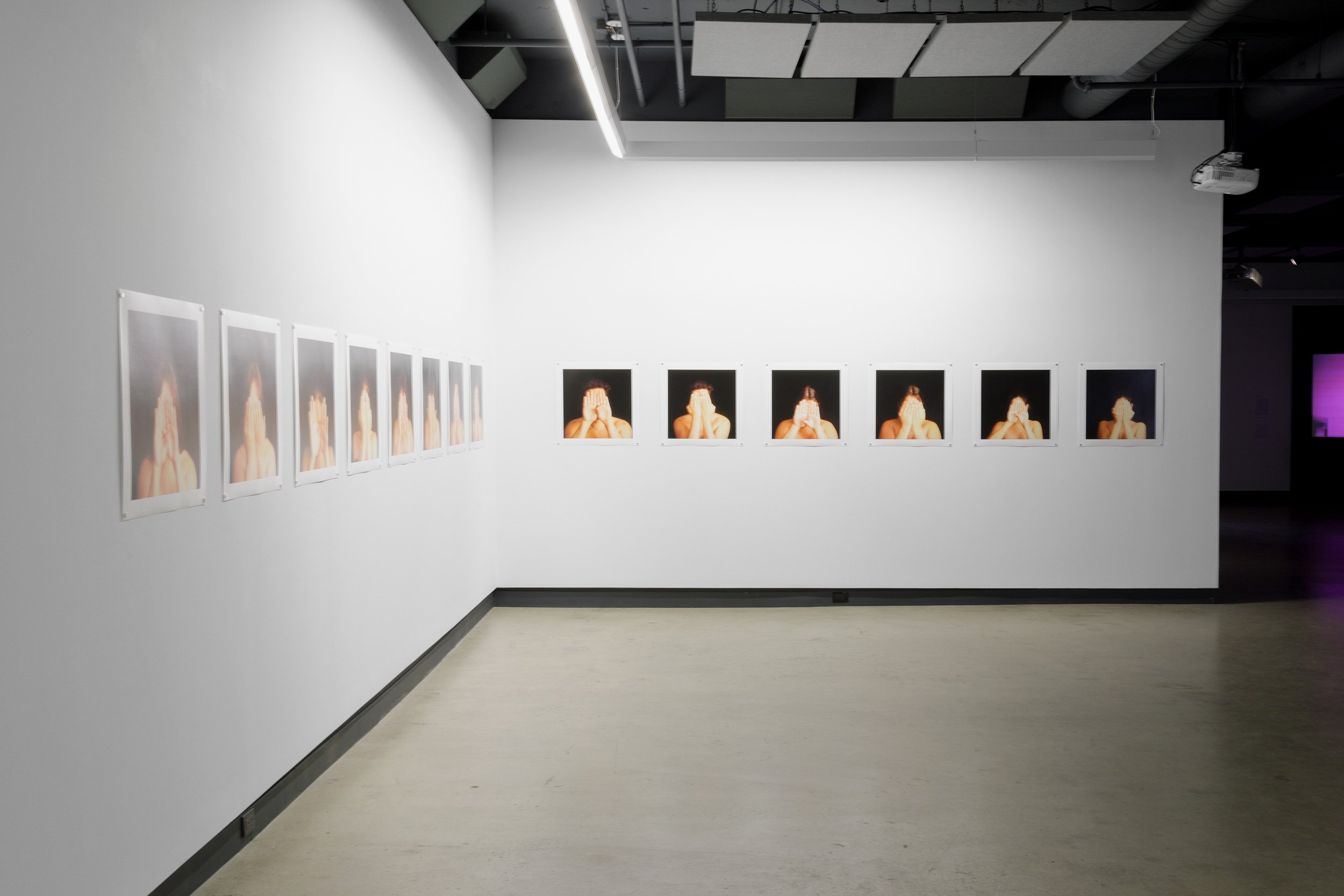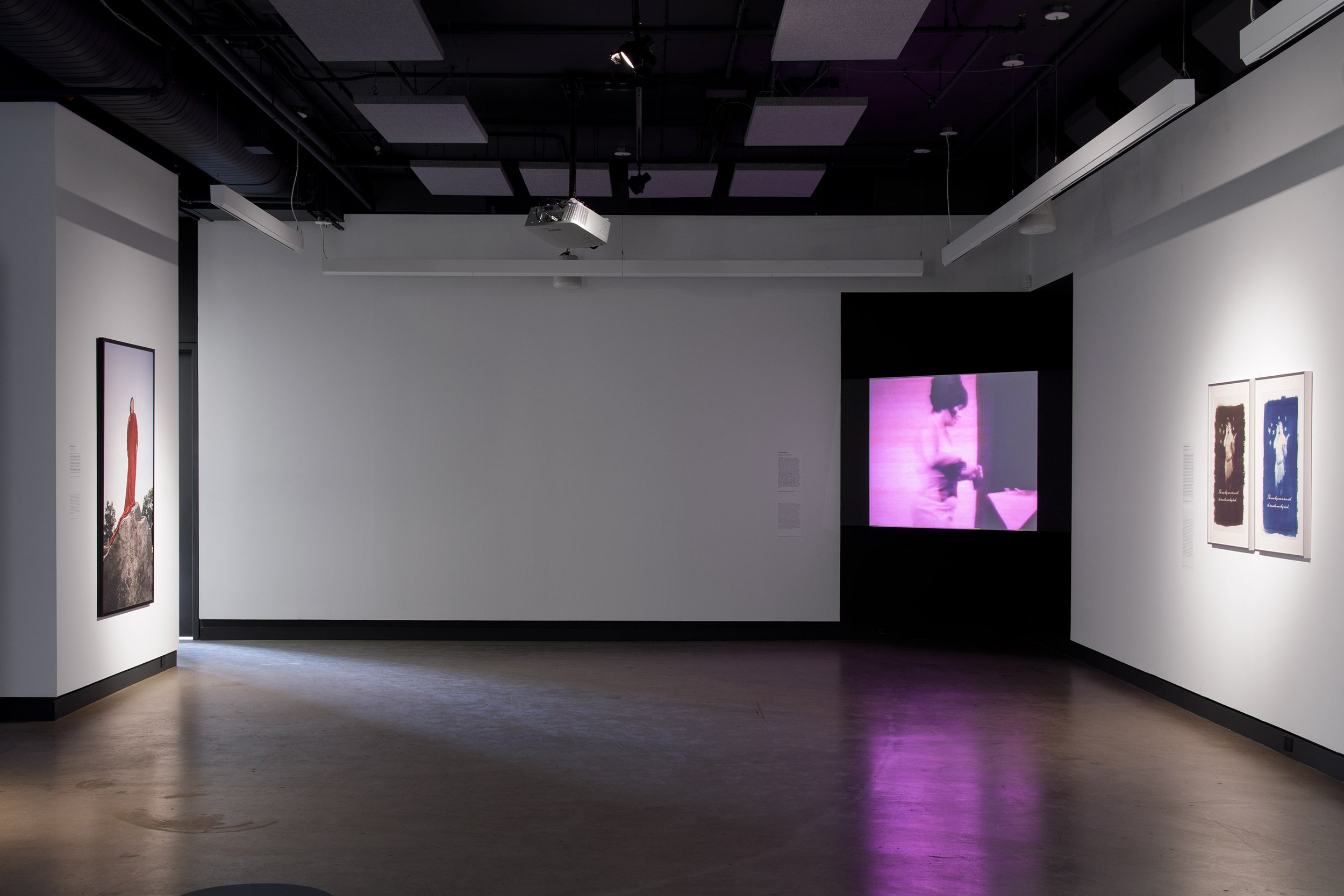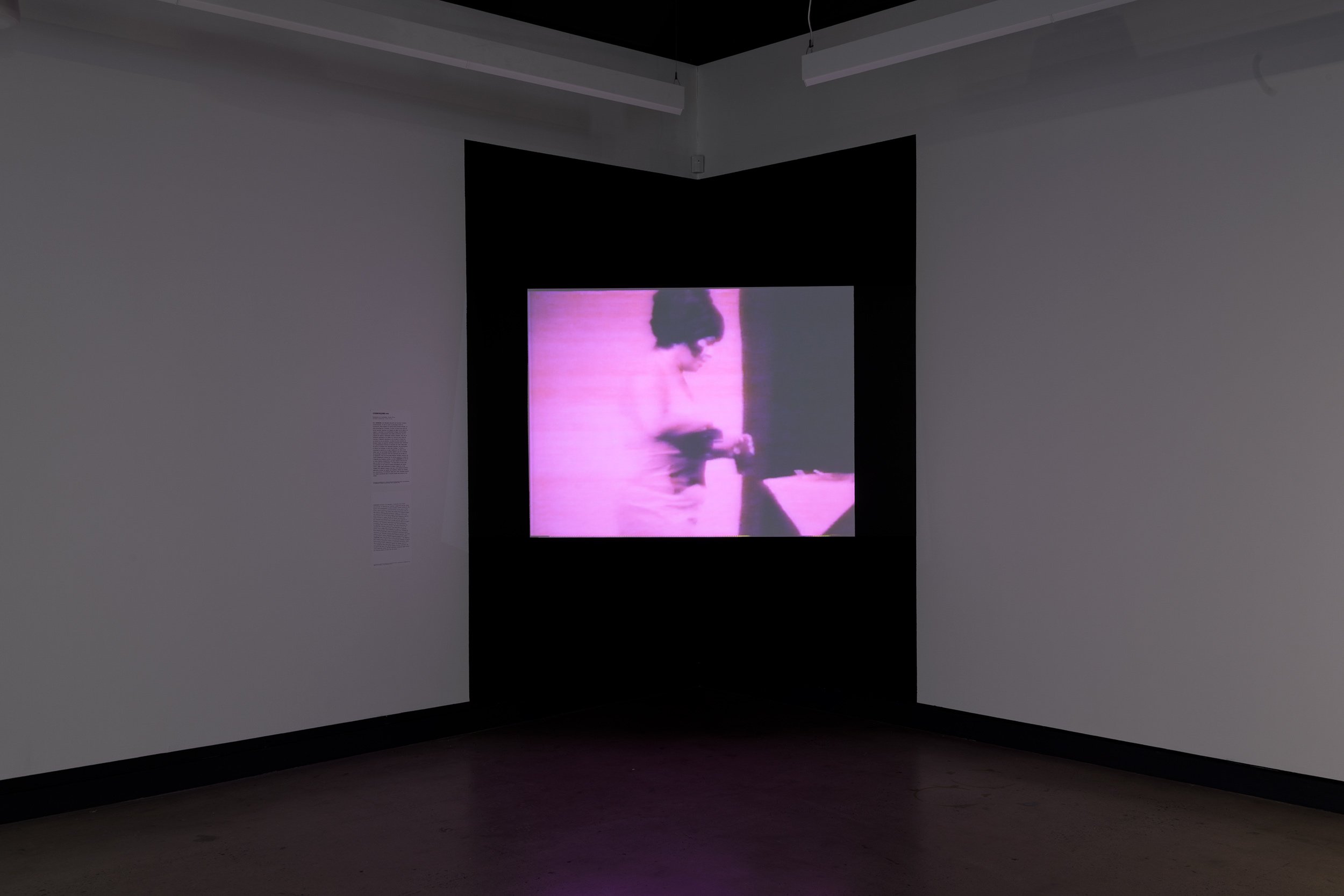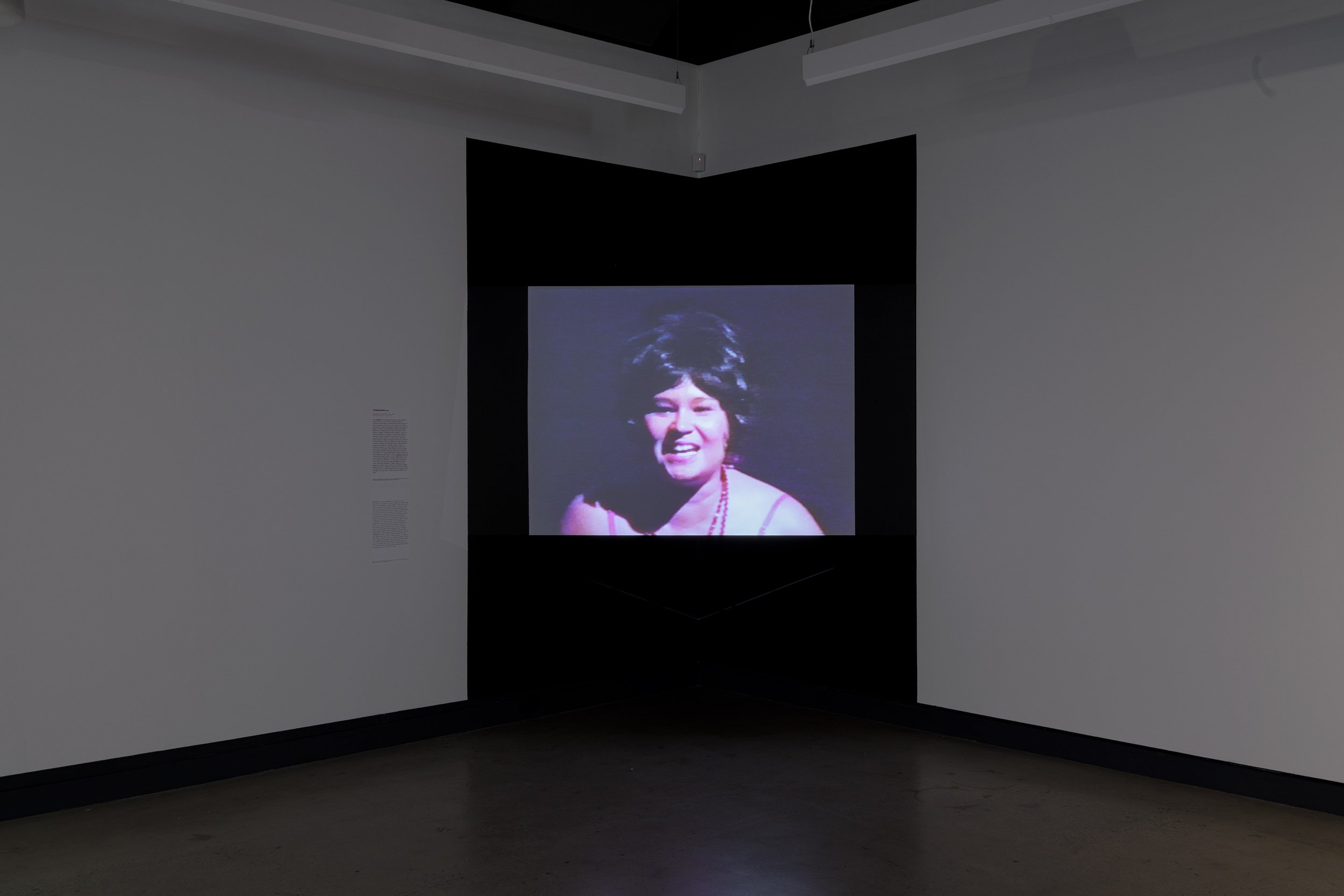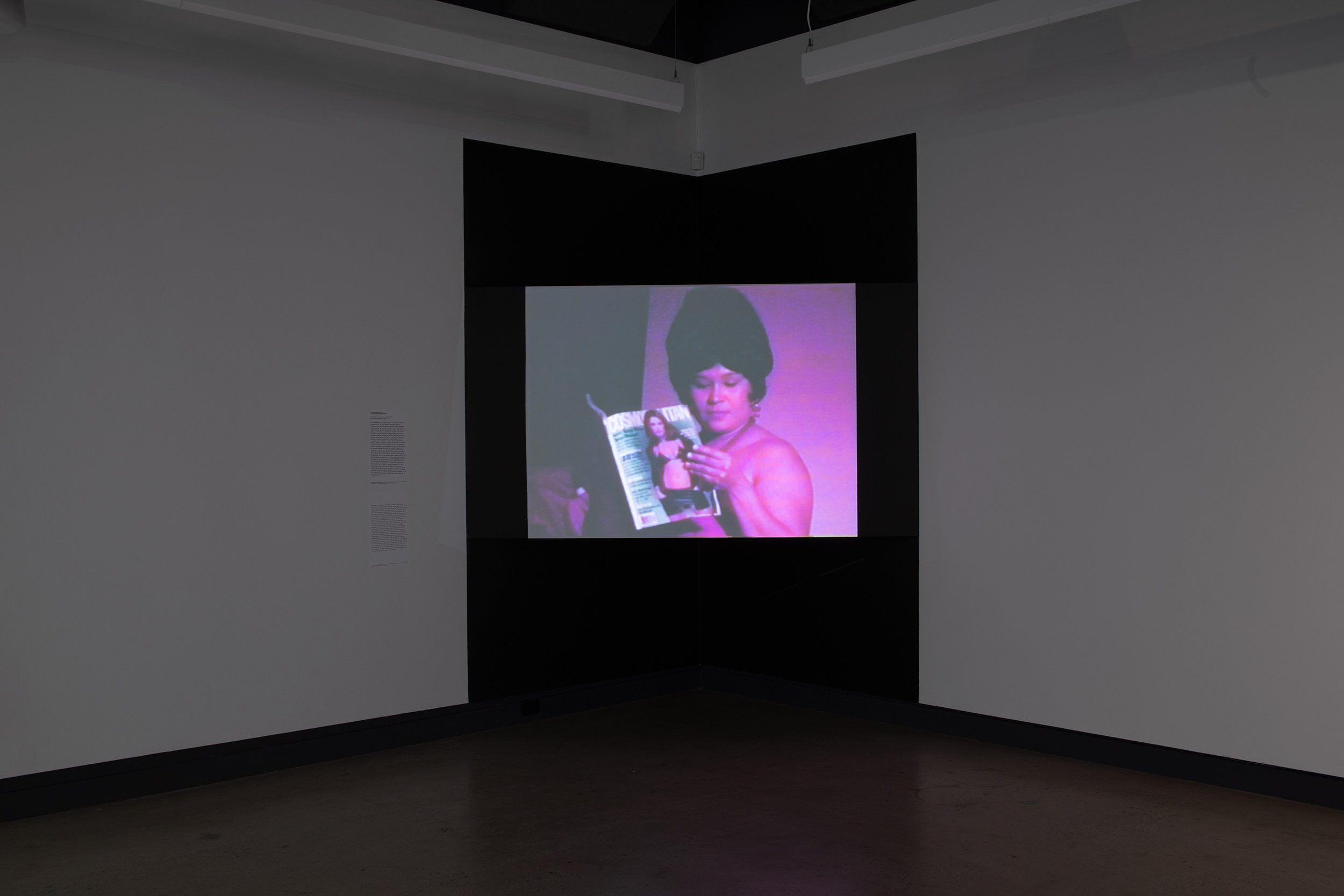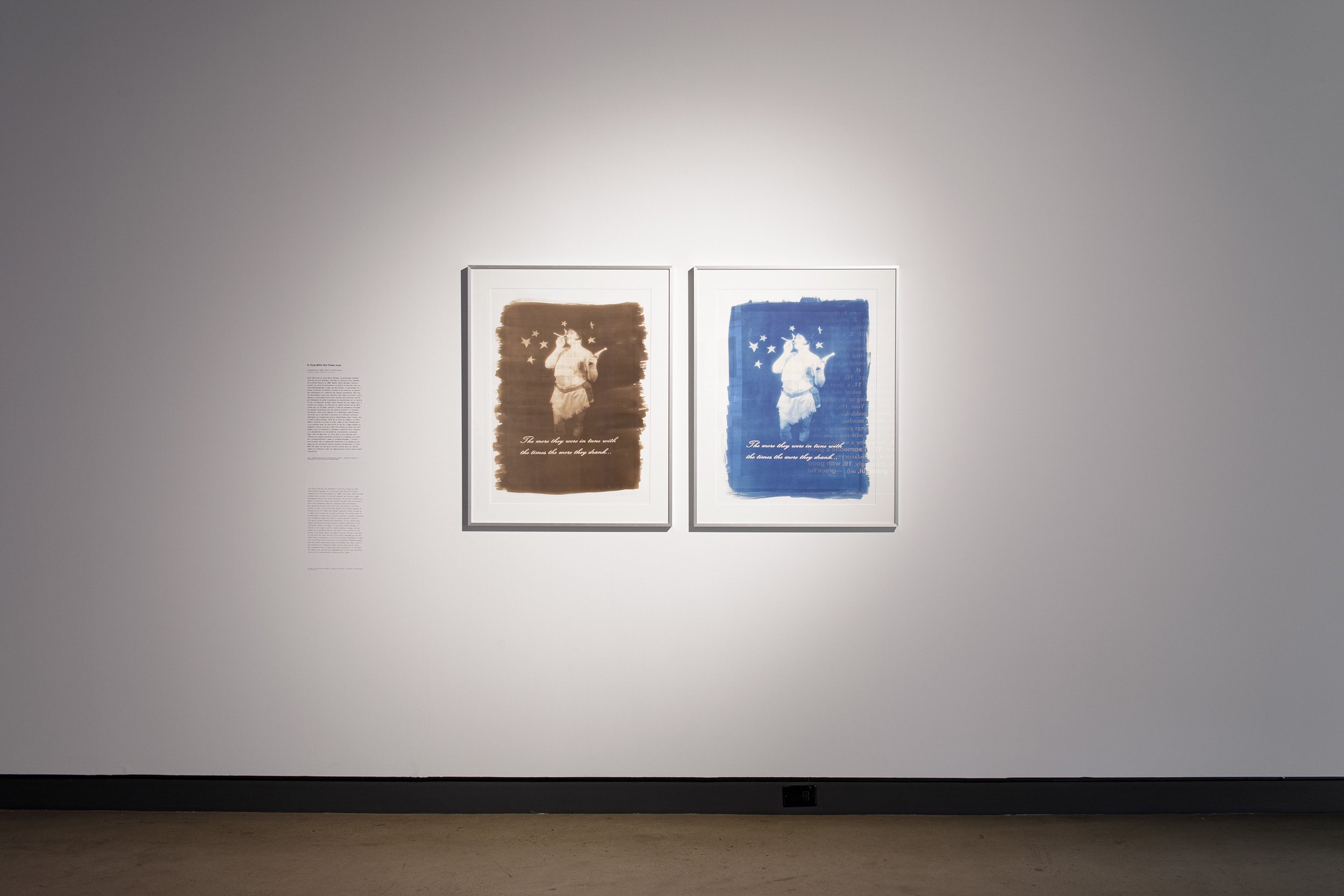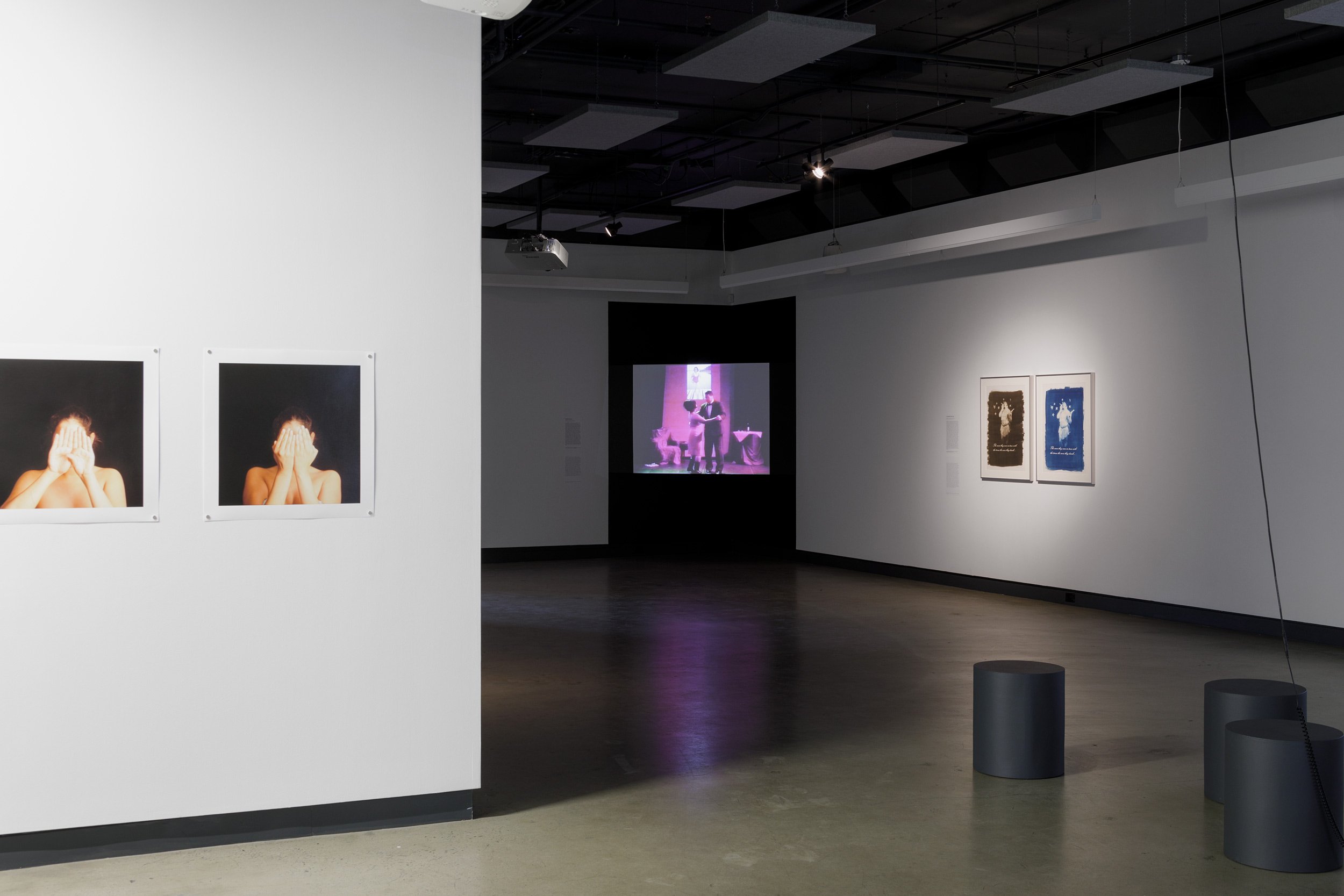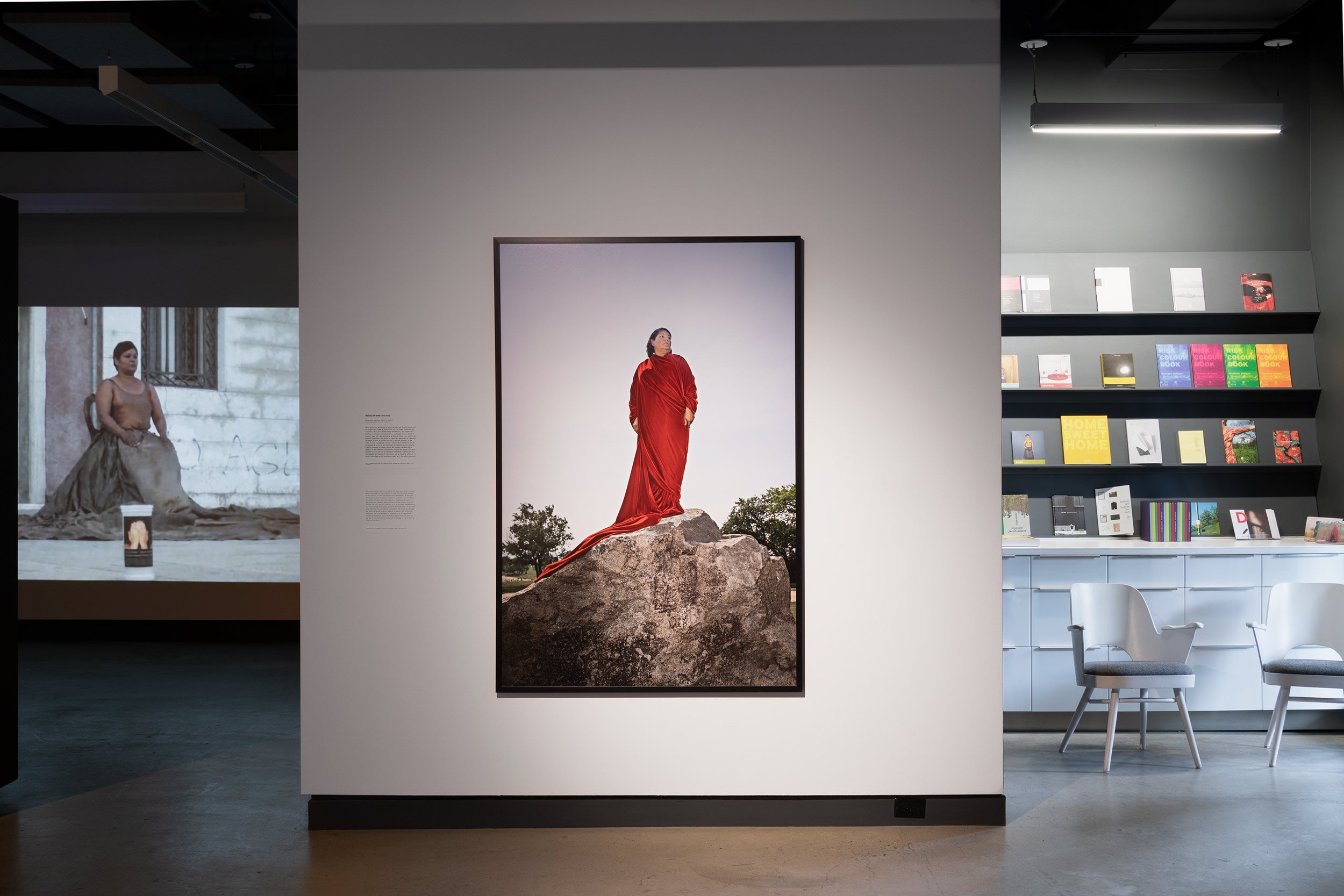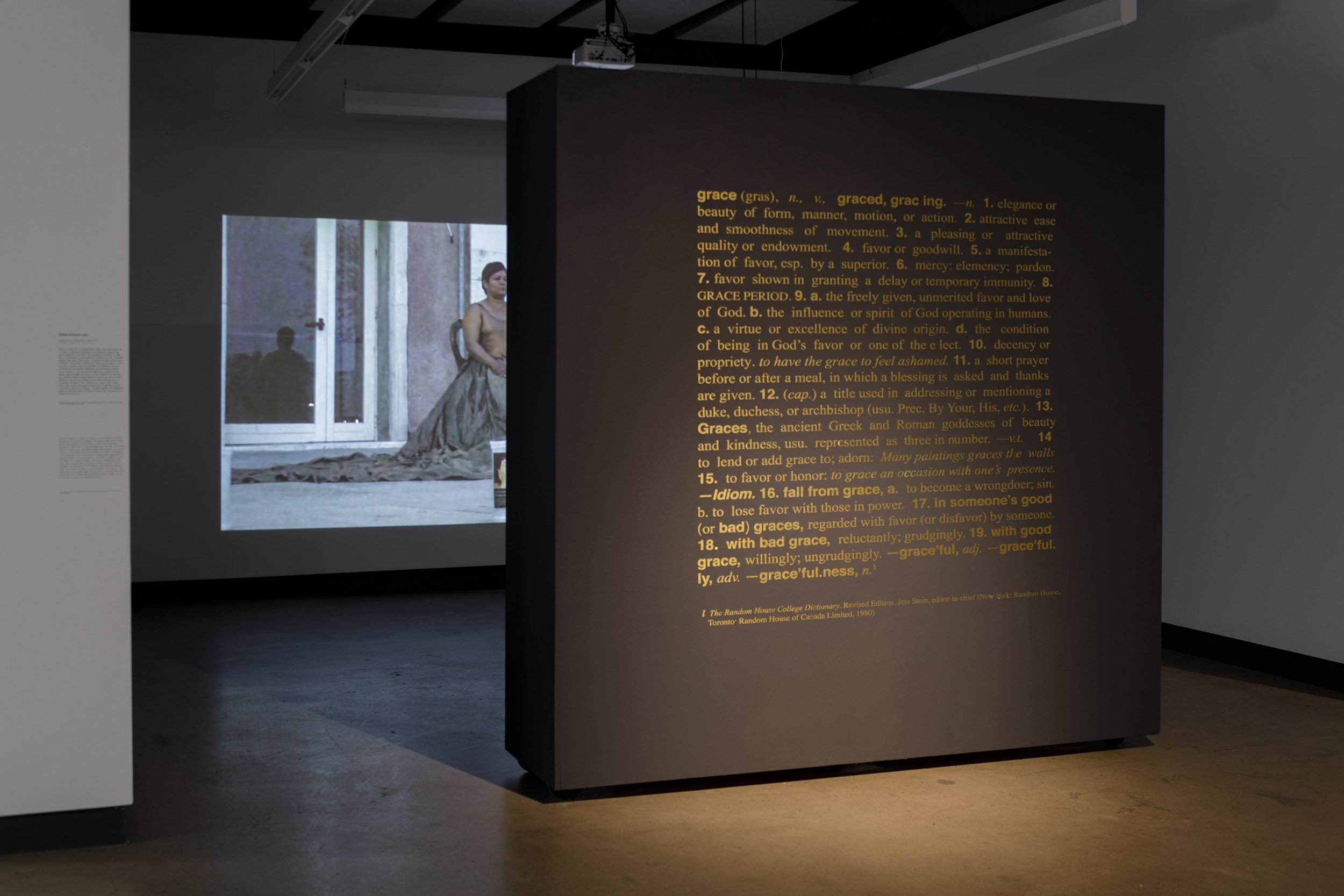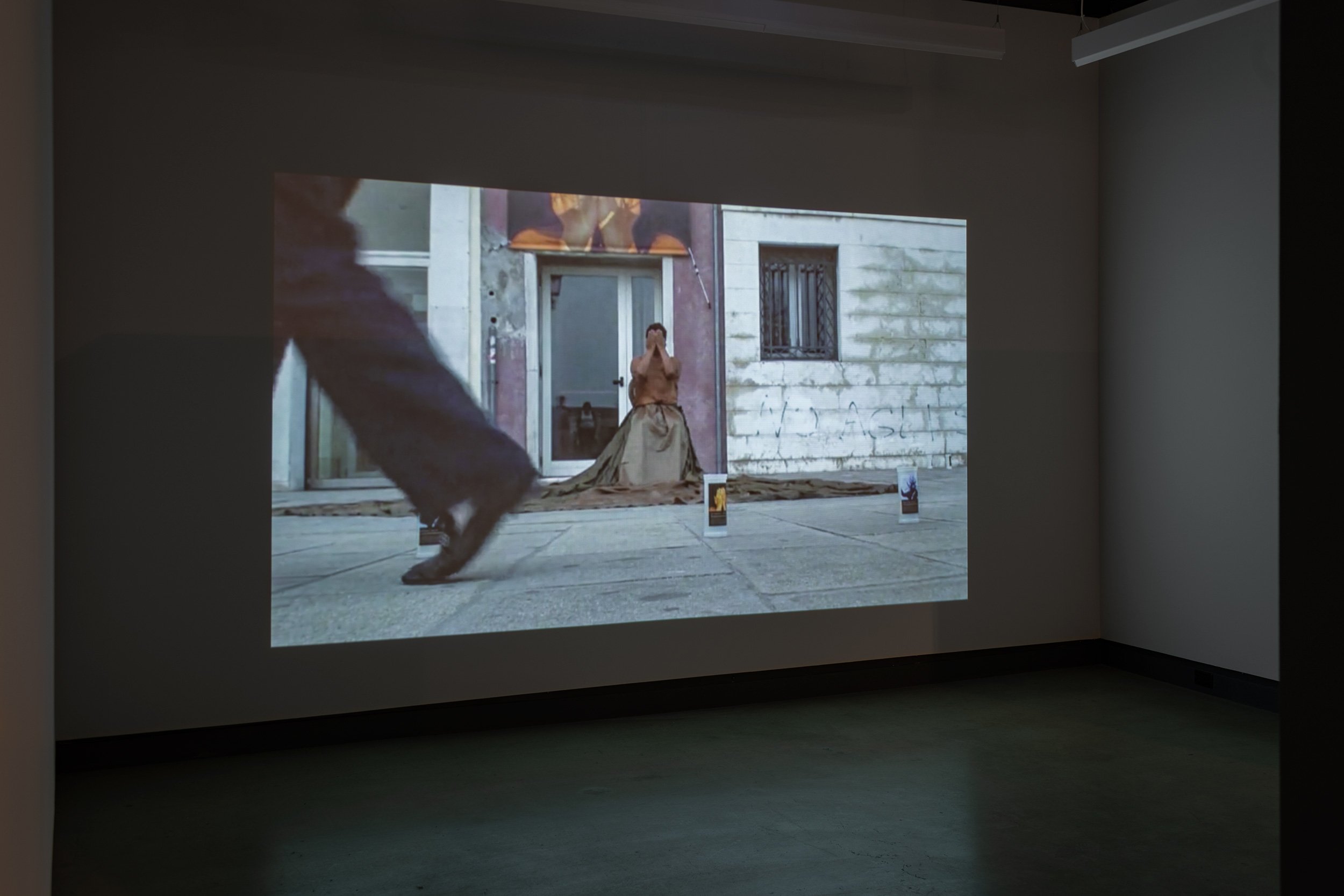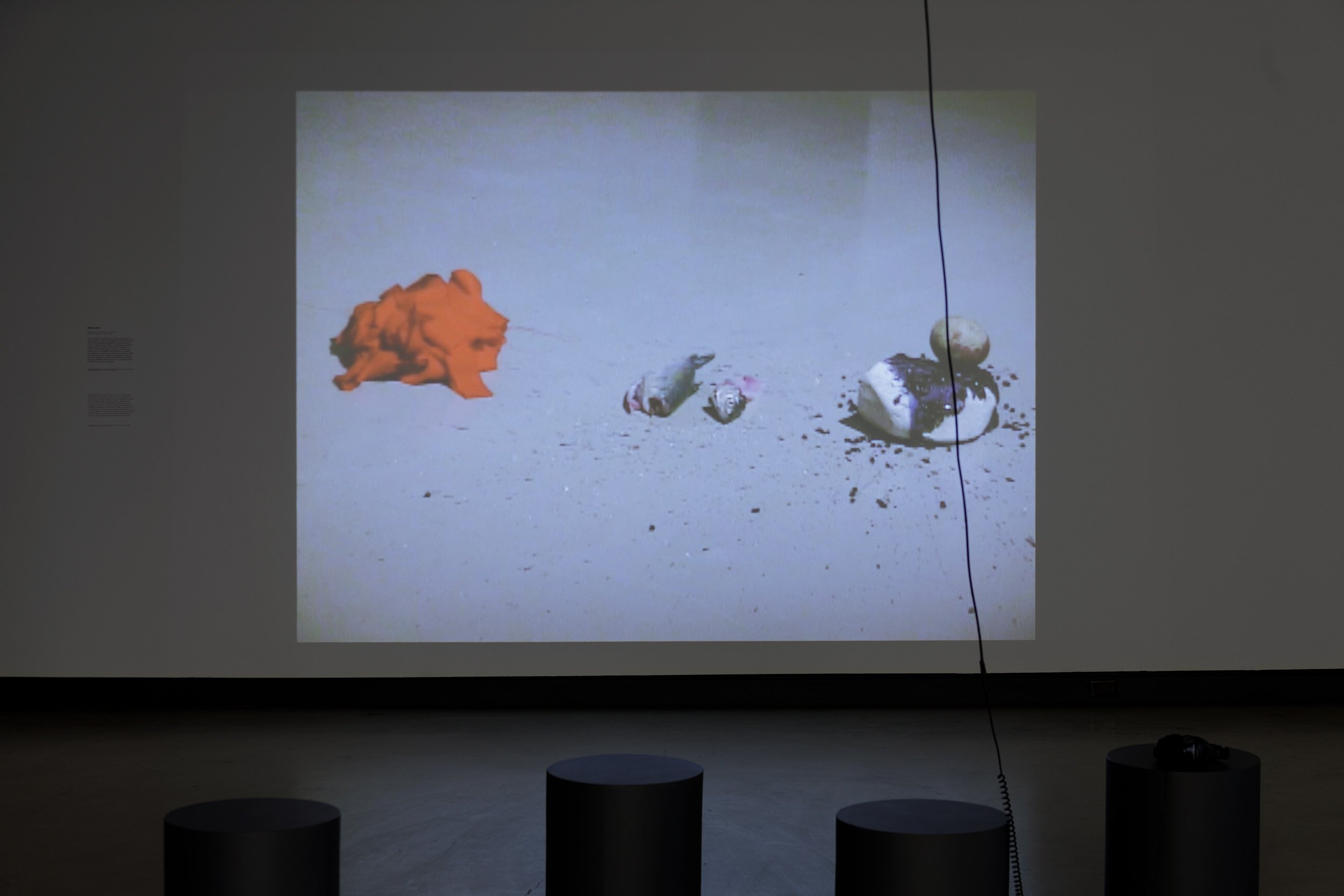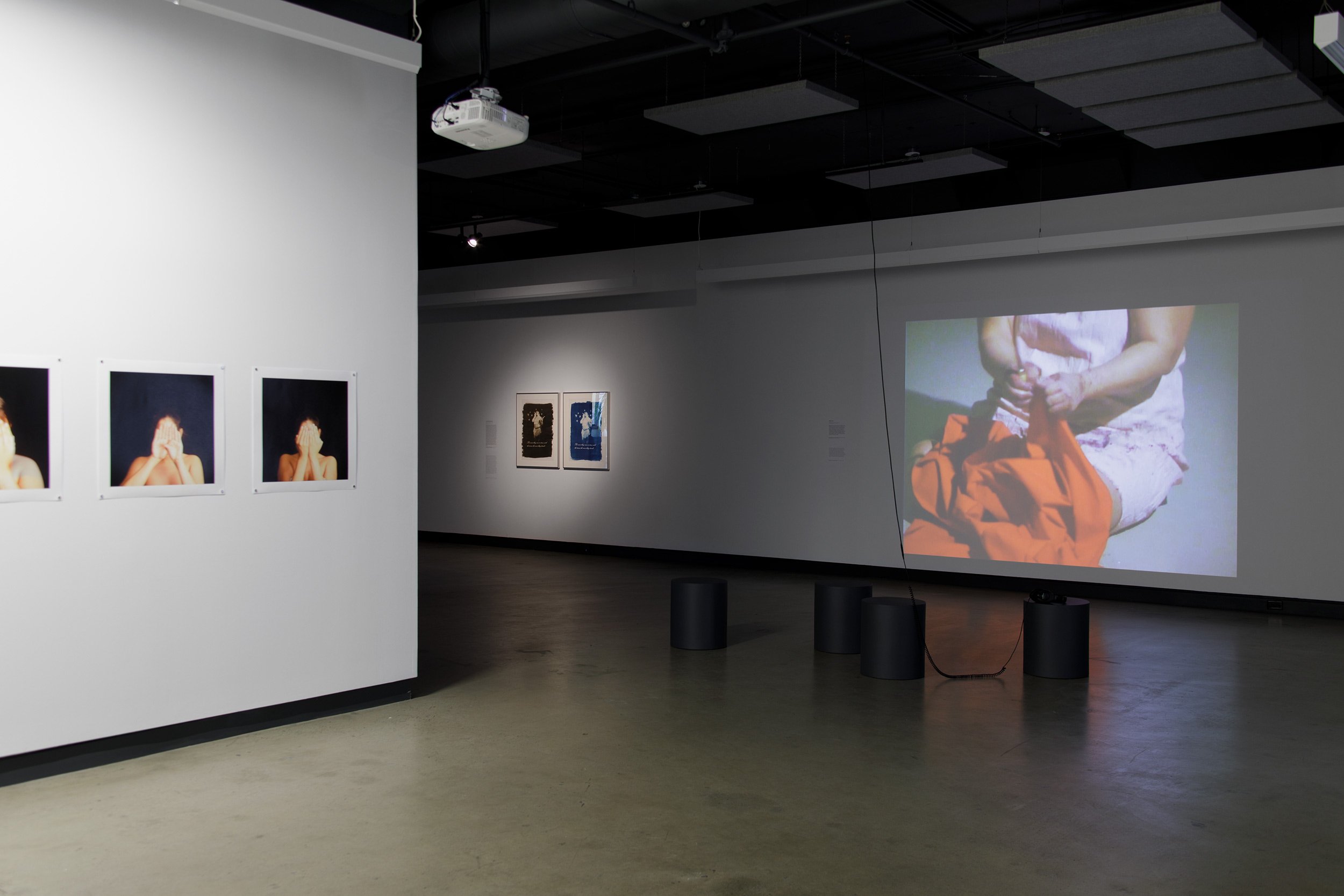Lori Blondeau
I’m Not Your Kinda Princess
From April 27 to June 23, 2023
Opening on April 27 from 5 pm to 7 pm, in the presence of the artist
The opening will be followed by a dv_vd screening: Empreintes cinétiques. Rachel Echenberg at 7 pm
Dazibao presents in collaboration with Plug In Institute of Contemporary Art (Winnipeg), I'm Not Your Kinda Princess, a selection of key works by Cree/Saulteaux/Métis artist Lori Blondeau (Saskatchewan), chosen from those originally curated by Nasrin Himada. Since the 1990s, Lori Blondeau’s artistic practice in the fields of performance, photography and installation, along with her curatorial work and activities as co-founder and Executive Director of the Indigenous art collective TRIBE, has proved decisive to the ever-increasing centrality of Indigenous art and knowledge production in Canada. This is Lori Blondeau's first solo exhibition in Montreal.
-
— Duratrans on light box, 108 cm x 80.2 cm x 17 cm
Lonely Surfer Squaw originated from a found generic, American pop-cultural postcard image of a California-esque beach surfer model. This piece is part of a series of light box works and postcards the artist recreated using the same image. She inserts herself into that iconography as a 60s surfer pin-up except, as she has remarked, “I’m an Indian woman standing on the prairies in the middle of winter”. Blondeau stares cheekily at the camera in her faux fur bikini and boots, cradling her oversized soft pink surfer board while standing in the snow. She takes on this surfer babe archetype and destabilizes the voyeuristic and objectifying intents embedded in such images through her own satirical flair. Although done in irreverence, this performative act subverts the gaze of ubiquitous media that undermines and reduces Indigenous women, like herself, and in landscapes such as the one she poses against.
Courtesy of Remai Modern, Mendel Art Gallery Collection, purchased with the assistance of the Canada Council for the Arts 2008.
-
— Performance documentation, 20 min. 27 sec.
COSMOSQUAW continues Lori Blondeau’s irreverent live visual storytelling. It features her invented, exaggerated persona, Betty Daybird (the granddaughter of Belle Sauvage, another persona of the artist) which started as a postcard series in the style of early 19th-century imagery. This media form helped proliferate some of the reductive and demeaning Eurocentric images of Indigenous women which fueled a lot of the still-common stereotypes such as the Indian Princess or squaw, and was another way Indigenous identity was colonized and distanced from its reality and histories. Blondeau’s postcard series took a shrewd satirical approach to circumvent the fictitious depictions by using her body as an agent to highlight their inherent absurdity. Her live performances extended this critical counter-play. The artist transformed the gallery into a campy 19th-century style Wild West set for her Betty Daybird persona. Betty Daybird is a remix of Indigenous characters from Wild West shows and Vaudeville acts. Through her skewed persona, Blondeau contests predominant narratives upheld through popular culture regarding First Nations identity. The title COSMOSQUAW comes from the women's magazine Cosmopolitan, which Betty Daybird mock-reads as part of the performance — the magazine being another Eurocentric context for endorsing standards of beauty that privilege fairer complexions as preferable and worthy. Squaw is an Indigenous word that means “woman” but became used in a derogatory way when First Nations people resisted colonizers. By using squaw with cosmo, Blondeau positions Indigenous women within the ethereal beauty of stars and the cosmos.
Performed as part of the festival Re-Inventing the Diva, co-produced by Exhibitions and Media art for Western Front (Vancouver, BC).
-
— 2 prints on paper, each 89.5 cm x 70 cm
This piece features Lori Blondeau’s recurring tongue-in-cheek persona Belle Sauvage. It is a persona that debuted through a commission by the Dunlop Gallery in 1998. From there, Belle Sauvage evolved into a series of live performances, and various staged photographic works like these two pieces. The persona allowed her a means to critically unpack and reverse the power that stereotypes had on the Indigenous identity. Although these performances were delivered through humor and irony, she used the fictional persona to tell real stories that testify the traumatic weight of colonialism on her family and broader community. Belle Sauvage is a cowgirl who through her journeys confronts the colonial gaze of the Wild West (a name which in itself connotes a savagery projected onto Indigenous people who tried to resist colonial invasion). This piece co-opts Vaudevillian aesthetics. It is a medium that helped facilitate and spread certain conquest ideologies of the “available” lands in the West. In the photo, Belle Sauvage is dressed in her cowgirl outfit, stands holding a handgun and she smokes as if contemplating her next move. A text written at the bottom of the image states in elegant cursive: “The more they were in tune with the times the more they drank…” Blondeau pulled that remark from a documentary on the first colonial settlements in New York. The “they” being referred to are colonized Indigenous people and “the times” being westernized. As Blondeau has noted, alcohol was introduced to Indigenous people during those earlier times when Indigenous ways of being were being eradicated. In Tune With The Times is an allusive work embedded with a stark and disturbing reality; the reverberations of which persist today.
Courtesy of Kenderdine Art Gallery College Art Galleries | University of Saskatchewan Art Collection.
-
— 14 inkjet prints on paper, each 61 cm x 61 cm
Originally a live performance, Grace was adapted to include friends and family members for this serialized 14-frame photographic work. It is one of the very few times the artist is joined with a group as part of her artwork. Here, she amplifies the singular performing “self” into a multifarious community. In doing so, she emphasizes that the stories she transmits through her performances aren’t exclusive to her, for her, or from family but something larger and beyond. Photographed against a black background, each figure of the image is centered within their respective frame alternating between an inward and outward-facing hand gesture. The gestures suggest both a protective concealment of personhood and a repellent shield from the viewer’s scrutiny. Viewed all together, their flickering motioning creates a choreographic chorus of talismanic symbols, purposefully legible only to the community of people creating it.
Courtesy of Kenderdine Art Gallery | College Art Galleries | University of Saskatchewan Art Collection.
-
— Performance documentation, 17 min. 54 sec
Sisters documents a series of ritual actions by Lori Blondeau performed in a gallery space in front of a live audience. The artist enacts a tableau informed by the daily domestic activities of the Indigenous women she grew up around. Through various actions, including crushing chokecherries between rocks and prepping hunted fish for cooking, she upholds the matrilineal knowledge and traditions held within her family. She testifies to the endurance of this family history despite the destructive forces of the residential school system to which her mother was subjected. By way of symbolic cultural communication, Blondeau mediates, sustains, and instigates decolonial Indigenous ways of being.
Performed as part of the Rencontre international d'art performance de Québec et Le Lieu - centre en art actuel.
-
— Performance documentation, 29 min. 32 sec.
States of Grace is a video recording of a performance the artist previously presented at The Mandel Art Gallery with various stage props. She restaged the performance outdoors for the Venice Biennale in 2007, where it was performed over five days just before sunset. Dressed in an overflowing golden-coloured gown, the artist sits on a throne-like seat in the middle of a public thoroughfare at the biennale. She is encircled by votive candles embodying the varying notions of the word “grace” — one that is imposed and one she adopts as a coping strategy. The artist’s unmodulated voice plays over the performance narrating a series of seven stories: one about the birth of her four children, one about the passage of time, and stories of death. In each narration, she turns her open palms inward and outward away from her face — a gesture that can be interpreted as the alternating dichotomies within states of grace in the face of loss, and celebration of life.
Performed as part of the Requickening project with artist Shelly Niro at the 52nd Venice Biennale.
-
— Digital photograph, 152.4 cm x 111.8 cm
This piece is part of the series of the same name, Asinîy Iskwew, which translates to "Rock Woman" in Cree, the ancestral language of the artist. In this monumental-scale photograph, we see Lori Blondeau standing stridently wrapped in a crimson velvet drapery. A platform of rocks gives her stature a commanding presence. She averts the viewer’s gaze, placidly looking outward from the present and into the far distance. It’s as if she’s contemplating the future ahead while being upheld by the formations of the land that fortifies her matrilineal resilience. The piece acknowledges the rocks as sacred objects, keepers of memory, and collective histories. The site Blondeau is situated on is a significant ceremonial gathering place for Plains peoples and this work is her way of emboldening the historical knowledge it holds despite colonial intrusion.
Courtesy of the Contemporary Native Art Biennial (BACA) and the artist.
With her performances, which include Are You My Mother? (2000), Sisters (2002) and States of Grace (2007) and photographic work, including COSMOSQUAW (1996), Lonely Surfer Squaw (1997) and Asinîy Iskwew (2016), Blondeau’s practice, both as a solo artist and in collaboration with fellow artists including James Luna, Rebecca Belmore, Shelly Niro and Adrian Stimson, demonstrates a clarity of focus which is remarkable for its precision, humour and strength. Her photographic and installation work has been exhibited in group and solo exhibitions at the Art Gallery of Windsor (Ontario), Kelowna Art Gallery, the Art Gallery of Alberta (Edmonton) and Remai Modern (Saskatoon) among numerous others. Her performance pieces have been showcased at Nuit Blanche (Saskatoon and Winnipeg), VIVO (Vancouver), Art Gallery of Ontario (Toronto) and the 2007 Venice Biennial. Blondeau has participated in panel discussions and given lectures at the Art Gallery of Ontario (Toronto), the University of Saskatchewan (Saskatoon), the IAIA Museum of Contemporary Native Arts (Santa Fe) and the 2020 Sydney Biennale. Since 2018, Blondeau is an Assistant Professor of Indigenous Art at the University of Manitoba School of Art; sat on the Advisory Panel for the Canada Council, Visual Arts program and served as a member of the Aboriginal Curatorial Collective. Blondeau was a recipient of the 2021 Governor General’s Award in Visual and Media Arts.
Other exhibition
Alexandre Erre
Fair Trade
From April 27 to June 23, 2023
Mediation
À l’image — Takeover 4
À l’image — Takeover is a participatory art series in which, over two years, a group of young Montrealers intervenes and responds to Dazibao’s exhibition programming, collaborating with each other and their mentor, artist Veronica Mockler.
Dazibao thanks the artist and Plug In Institute of Contemporary Art for their generous collaboration as well as its advisory programming committee for its support.
Dazibao receives financial support from the Conseil des arts et des lettres du Québec, the Canada Council for the Arts, the Conseil des arts de Montréal, the Ministère de la Culture et des Communications and the Ville de Montréal.
Dazibao acknowledges that we are located on unceded territory of the Kanien'kehá: ka Nation and that Tiohtiá: ke / Montreal is historically known as a gathering place for many First Nations, and today, is home to a diverse population of Indigenous as well as other peoples.

